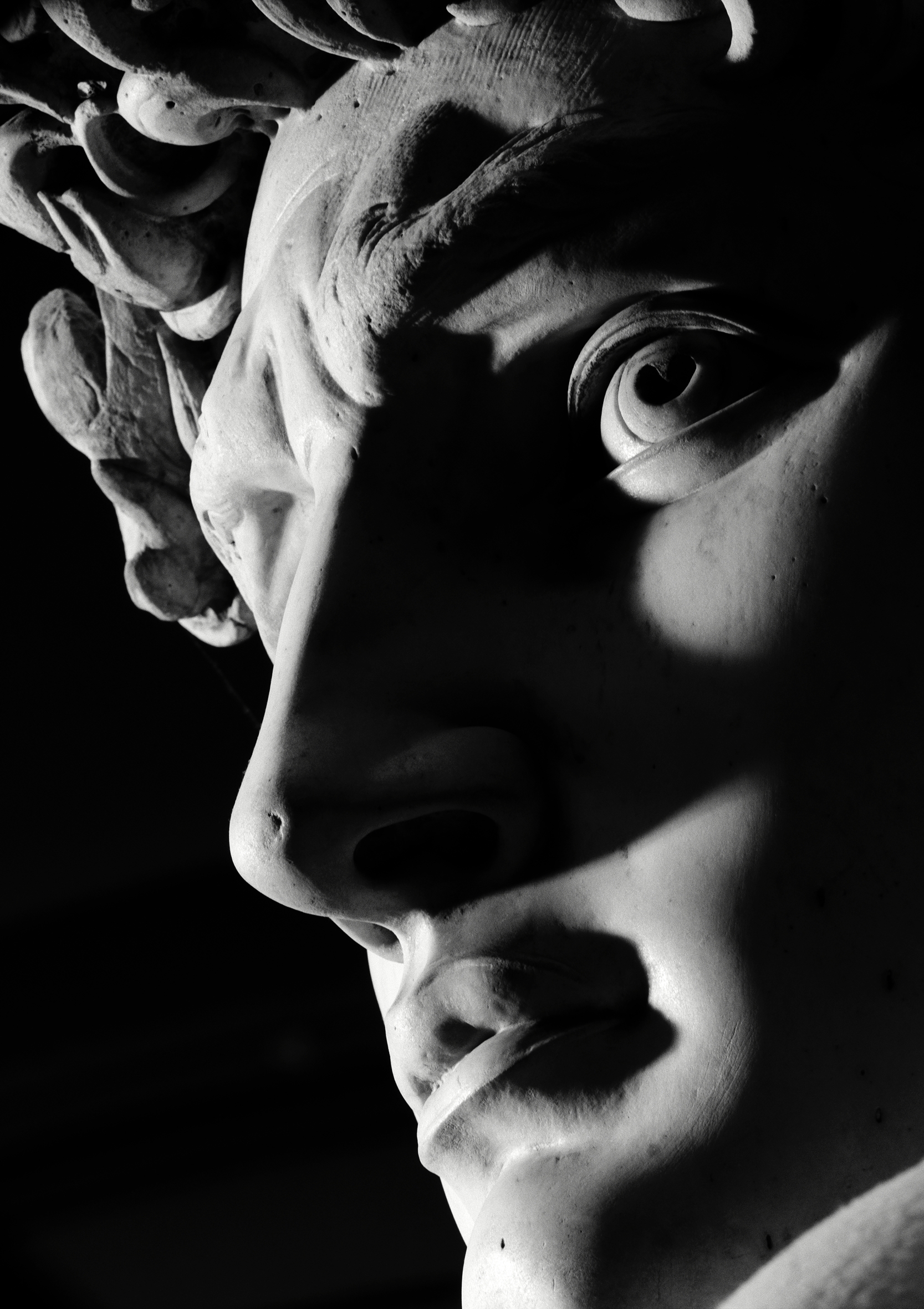
Aurelio Amendola, born in Pistoia on January 19, 1938, dedicated his exceptional career as an art photographer to contemporary themes, creating a remarkable Gallery of Portraits of the most celebrated masters of the 20th century. It became a gallery of illustrious figures of the highest era, revisited with contemporary flair, featuring artists such as De Chirico, Pomodoro, Schifano, Lichtenstein, and Warhol. Thanks to his personal relationships with many of them (including Manzù, Fabbri, Ceroli, Vangi, Kounellis, Pistoletto, Parmiggiani, Paladino, Barni, Ruffi, and Mainolfi), he produced numerous monographs accompanied by his photographs. His collaboration with Marino Marini and Alberto Burri was particularly significant, as they were unforgettable companions on his artistic journey. In parallel, Amendola distinguished himself with renowned photographs of Italian Renaissance sculptures, and more generally, with those dedicated to classical tradition, intimately understanding their volumetrics, three-dimensionality, and contrasts, always offering a deliberately unconventional perspective, inspired by a tactile, emotional, and sensory vision.
His beginnings were marked by the now-famous volume “Il pulpito di Giovanni Pisano a Pistoia” (1969). Following his primary photographic campaign in 1964, he embarked on many others, exploring his subjects with both rigorous fidelity and mutable interpretation, especially through his skillful use of changing light. His interest in antiquity is evident in many of his other photographic works, focusing on artists such as Donatello, Jacopo della Quercia, Luca della Robbia, Canova, Bernini, and Michelangelo. Amendola dedicated numerous catalogs, exhibitions, and monographs to Michelangelo’s marble sculptures, considering them as constant sources of inspiration. In 1994, his book “Un occhio su Michelangelo” (dedicated to the Medici Chapels in San Lorenzo, Florence) won the Oscar Goldoni Award for the best photographic book of the year. Amendola’s works encompass the great themes of Italian art, creating true masterpieces. For example, his volumes on St. Peter’s Basilica offer a personal perspective through elegant perspectives, unexpected details, and unprecedented views. Over the years, Amendola constantly experimented with audacity, mixing styles, juxtaposing elements, and blending contemporary and classical aesthetics. He effortlessly integrated the ancient into the contemporary and assigned a classical treatment to the modern, consistently composing timeless and ageless photographic sequences, capturing their immortality.
In addition to portraiture and ancient statuary, Amendola also extensively explored the poetry of places, capturing the essence of their architectural and residential genius. His subjects included the Milan Cathedral, Matera, San Galgano, the sculpture park of the Gori Collection at Fattoria Celle di Santomato, Il Vittoriale degli Italiani, and Burri’s monumental Cretto di Gibellina.
Renowned scholars and critics, including Antonio Paolucci, Antonio Natali, Tomasi Montanari, Maurizio Calvesi, Bruno Corà, Vincenzo Trione, Eike D. Schmidt, Flaminio Gualdoni, Walter Guadagnini, Antonio Scurati, Silvio Ceccato, and Cristina Acidini Luchinat, have written about Amendola’s work, each recognizing the sensuality and spirituality of his “Camera Aurea” (Golden Room).
Amendola’s works are held in prestigious private and public collections, including the Fondazione Maramotti in Reggio Emilia, GAM in Turin, Fondazione Arnaldo Pomodoro in Milan, MAXXI in Rome, Fondazione Alberto Burri in Città di Castello, Uffizi Gallery, Palazzo Fabroni in Pistoia, and Fondazione Cassa di Risparmio di Pistoia e Pescia.














